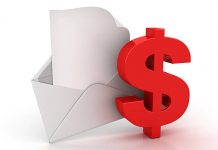- Powered by income supports and an accelerating vaccine rollout, retail sales surged by 9.8% month-on-month in March, blowing away market expectations for 5.9% growth. Combined with February’s upward revision (from -3.0% to -2.7%), this results in the first quarter average of +7.7% the second highest on record after the third quarter of 2020. The level of retail sales was a whopping 27.7% above where it was last March, when the pandemic and lockdowns first took hold. Even relative to pre-pandemic retail sales, the level is extraordinarily high, sales are 17.1% higher than January 2020.
- The volatile categories of motor vehicles and parts (+15.5% m/m), building materials and garden equipment (+12.1%), gasoline stations (+10.9%) recorded solid rebounds last month.
- Food services & drinking places rebounded by 13.4% on the month, narrowing its pre-pandemic gap from -17% to -4.6%.
- Excluding these groups, retail sales in the “control group” jumped by 6.9%. The reading in this category gives us the first take on the strength in personal consumption expenditures, which will be released at the end of the month.
- Not a single group reported a decline. Sales in hobby, book & music stores drove the surge, rising by 23.5% on the month, followed by a 18.3% m/m pick up in clothing & accessory stores sales. Non-store retailers continued to make headway, advancing by 6%m/m.
Key Implications
- What a strong finish to the first quarter! While the American Rescue Plan primed consumers to loosen their purse strings, fast vaccination and removal of restrictions burst the spending floodgates wide open. Today’s report shows just how willing American consumers are to spend when the means and options are available.
- The next several months shouldn’t disappoint either. We expect that spending will pick up more steam, giving an extra boost to our forecast. Even as the initial effect of stimulus payments on spending diminishes, high savings and rebounding employment income should pick up the ball. Indeed, recent data suggest that compensation of employees is poised to rise as private businesses accelerate rehiring and state and local government begin spending the $350 billion in fiscal stimulus to reinstate public sector jobs not yet recovered. In the meantime, $200 billion in enhanced unemployment benefits should bridge the remaining gap.
- Since the broad economic rebound is dependent on easing of the pandemic, the recent pick up in cases and the halt of J&J vaccine warrant a word of caution. At the next stage of growth, we expect a return of spending on services made impossible by COVID19, so any delay on that front is a downside risk.












